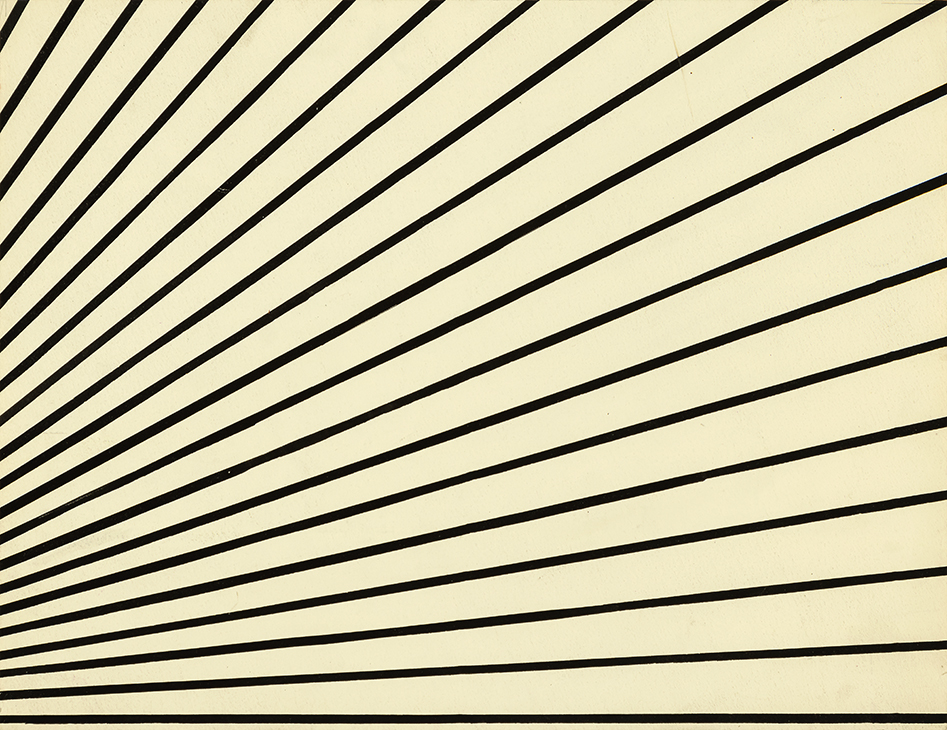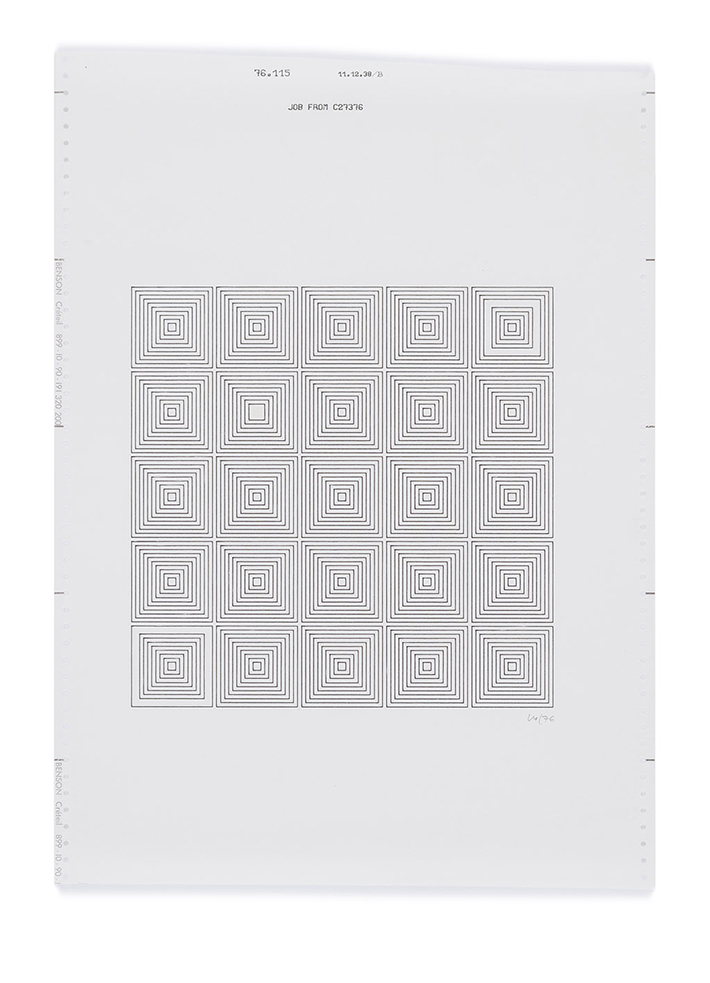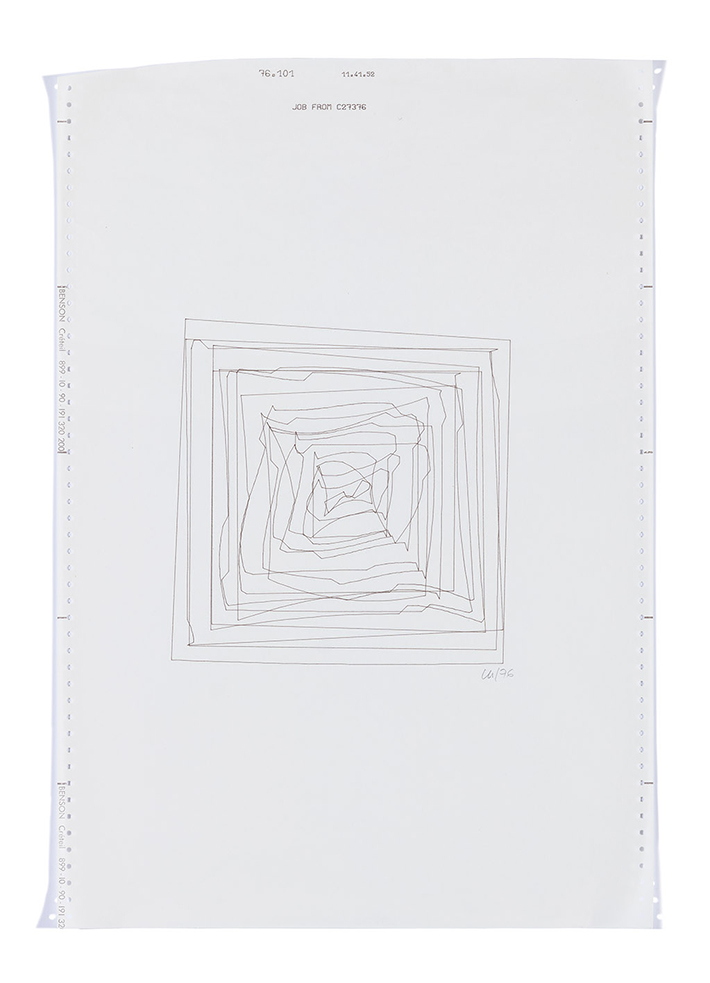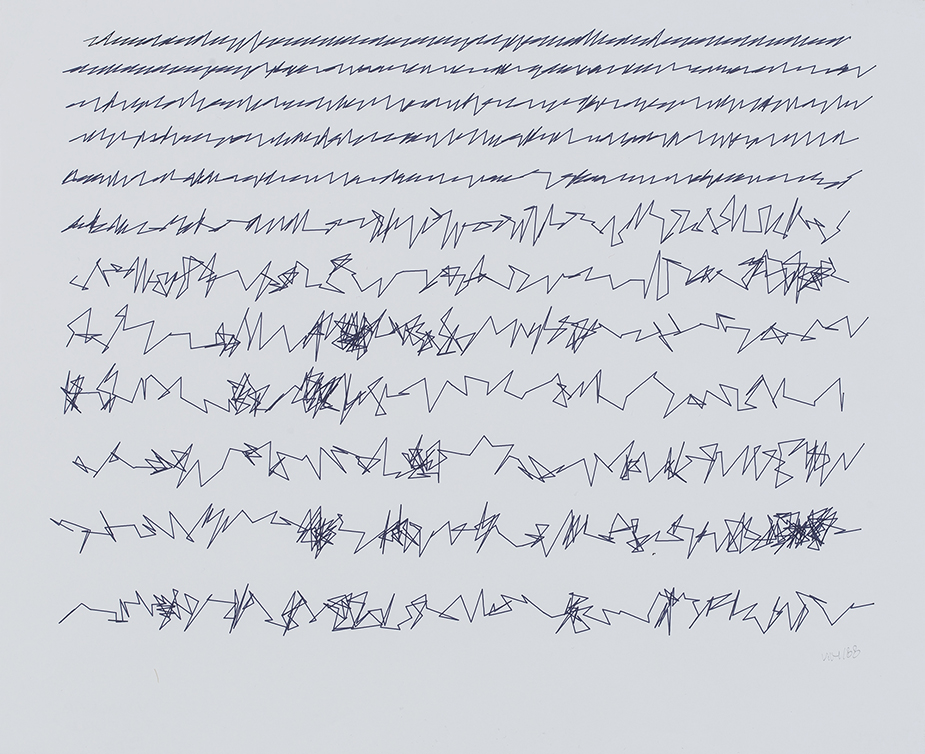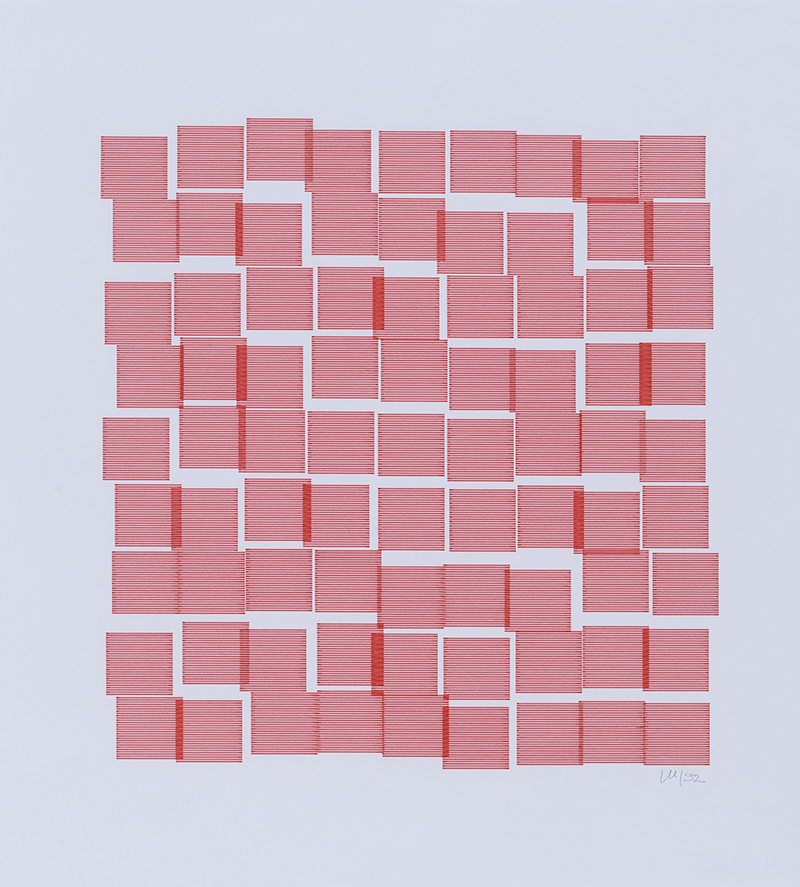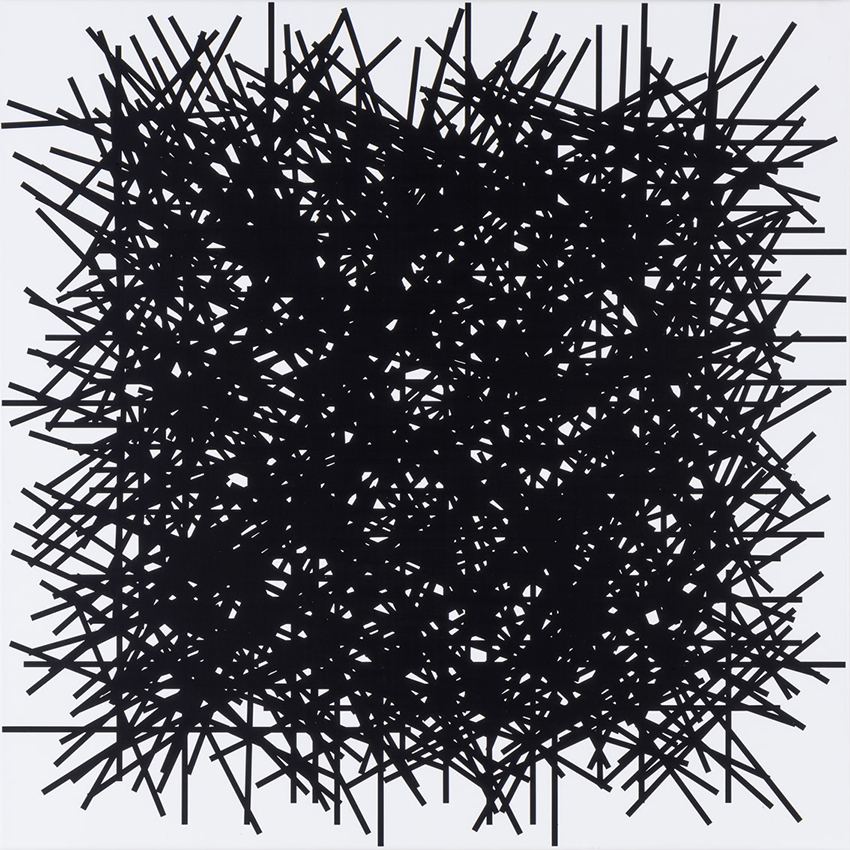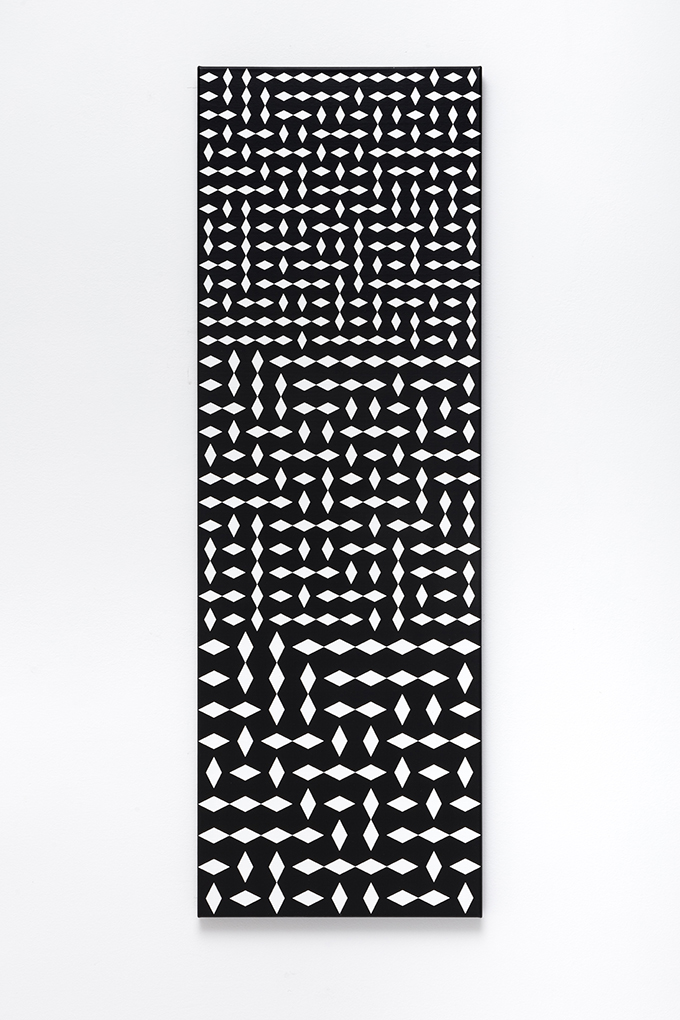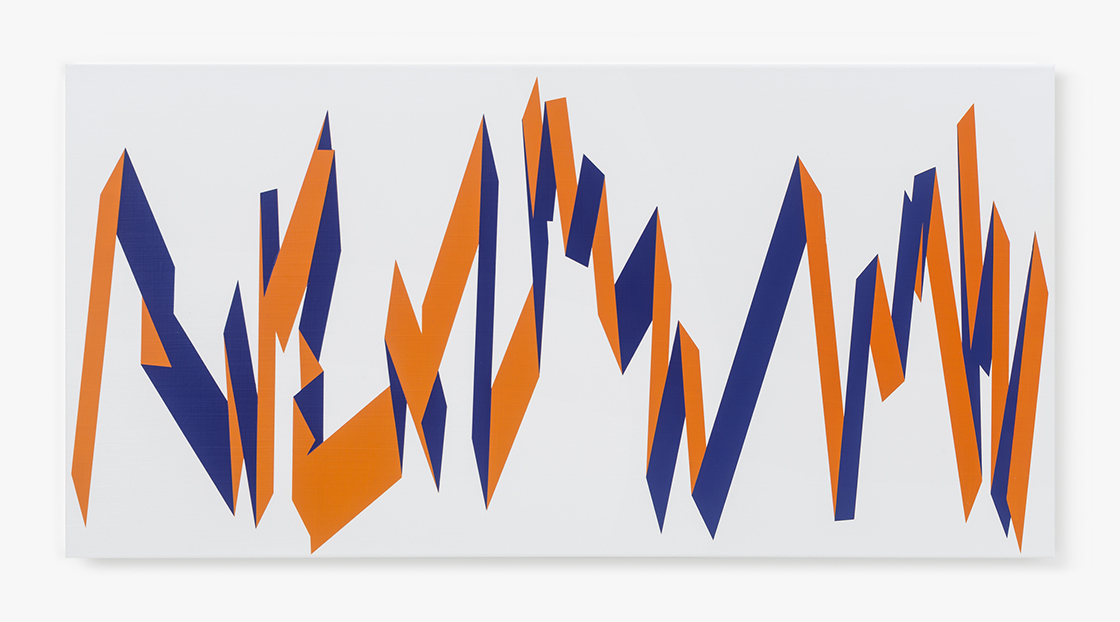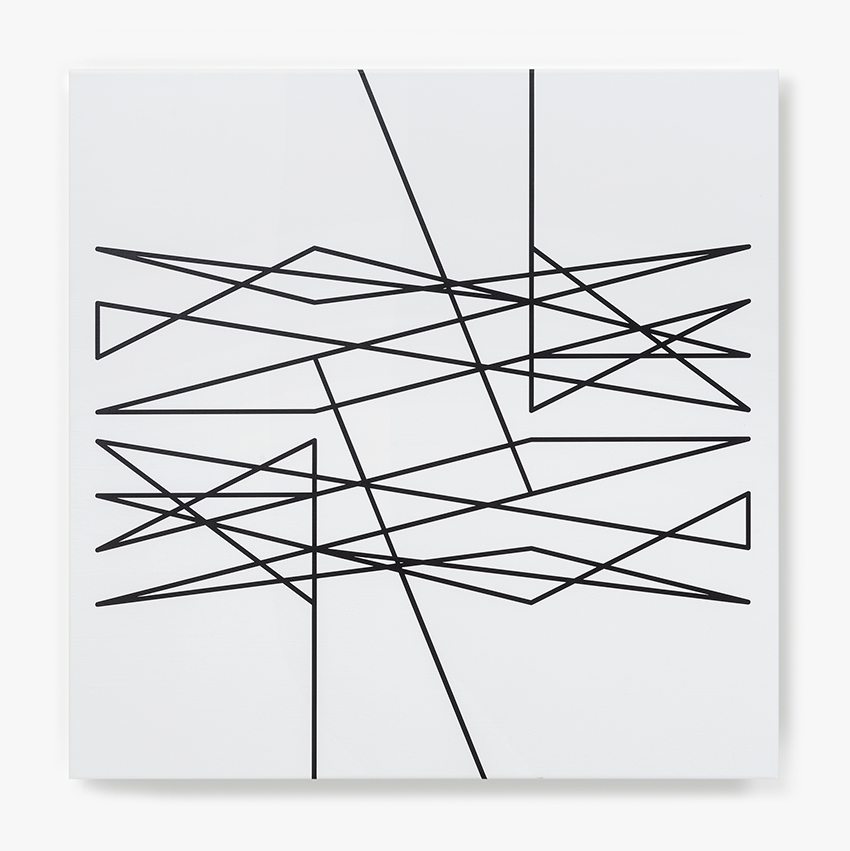Vintage Galéria
Vera Molnar
Vera Molnar (1924), who has lived in France since 1947, is a pioneer in computer art. In 1959, she began making combinatorial images and modelling mathematical patterns by a method which she called the “machine imaginaire”. Then in 1968, she had a very early opportunity to exchange her imaginary computer for a real one. Molnar began to use the programming language as a generative tool in her artistic work when making her paintings and graphics. She creates images using a limited number of simple forms and produces sequences by gradually changing the proportions and the arrangement of the elements. In Molnar’s case, the purpose of the seriality lays in the possibility of continuous comparison and analysis of the individual images, and in the possible visualisation of the changing process that takes place. Computer generated algorithmic chance plays a key role in Molnar’s works, and the concepts of order and disorder, structure and freedom are important in her art. As she states: “I wasn’t interested in anything but the simplest form, the square; what if there is order and what if there is not.”
Biography
Vera Molnar (1924) visual artist. In 1960, she was a founding member of Groupe de Recherche d’art Visuel (GRAV), and she participated in the exhibition titled Konkrete Kunst [Concrete Art], organized by Max Bill at Helmhaus, Zürich. Her first solo exhibition was held in 1976 at the London Polytechnic, and her first artist’s book titled Ein Prozent Unordnung [One Percent Disorder] was published in 1980 by Wedgepress & Cheese, Bjerred. Her works are continuously displayed at international solo exhibitions (e.g. (Un)Ordnung. Museum Haus Konstruktiv, Zürich, 2015; Pomenades en carré. Museum Ritter, Waldenbuch, 2020), and at group shows (e.g. Elles. Centre Georges Pompidou, Paris, 2009; Ein Quadrat ist ein Quadrat ist ein Quadrat. Museum Ritter, Waldenbuch, 2015; Thinking Machines: Art and Design in the Computer Age, 1959–1989. MoMA, New York, 2017). Her works can be found in the collections of the Bibliothèque Nationale (Paris), Centre Pompidou (Paris), Forum Konkrete Kunst (Erfurt), Hungarian National Gallery – Museum of Fine Arts (Budapest), MoMA (New York), Museum Ritter (Waldenbuch) and the Victoria and Albert Museum (London), among others. In 2022, Vera Molnar was invited to participate in the 59th International Art Exhibition La Biennale di Venezia, showing works at the group show titled The Milk of Dreams, curated by Cecilia Alemani.
Vintage Galéria
Vintage Galéria is an art gallery founded 1997 in Budapest. Vintage exhibits and represents Hungarian as well as international artists. The gallery program focuses on modernism 1919-1939 (André Kertész, Imre Kinszki, László Moholy-Nagy), conceptual art 1965-1989 (artists of the Eastern-European neo-avantgarde: Gábor Attalai, Tibor Hajas, Dóra Maurer) and a younger generation of contemporary artists (Andreas Fogarasi, Gábor Ősz, Dezső Szabó, Kamilla Szíj). We aspire with the exhibition and publication programme of Vintage Galéria to be an active participant in both the Hungarian and international professional discourse.

+36 20 913 6291
Attila Pőcze
+36 20 913 6291
Vera Molnar
Vera Molnar (1924), who has lived in France since 1947, is a pioneer in computer art. In 1959, she began making combinatorial images and modelling mathematical patterns by a method which she called the “machine imaginaire”. Then in 1968, she had a very early opportunity to exchange her imaginary computer for a real one. Molnar began to use the programming language as a generative tool in her artistic work when making her paintings and graphics. She creates images using a limited number of simple forms and produces sequences by gradually changing the proportions and the arrangement of the elements. In Molnar’s case, the purpose of the seriality lays in the possibility of continuous comparison and analysis of the individual images, and in the possible visualisation of the changing process that takes place. Computer generated algorithmic chance plays a key role in Molnar’s works, and the concepts of order and disorder, structure and freedom are important in her art. As she states: “I wasn’t interested in anything but the simplest form, the square; what if there is order and what if there is not.”
Biography
Vera Molnar (1924) visual artist. In 1960, she was a founding member of Groupe de Recherche d’art Visuel (GRAV), and she participated in the exhibition titled Konkrete Kunst [Concrete Art], organized by Max Bill at Helmhaus, Zürich. Her first solo exhibition was held in 1976 at the London Polytechnic, and her first artist’s book titled Ein Prozent Unordnung [One Percent Disorder] was published in 1980 by Wedgepress & Cheese, Bjerred. Her works are continuously displayed at international solo exhibitions (e.g. (Un)Ordnung. Museum Haus Konstruktiv, Zürich, 2015; Pomenades en carré. Museum Ritter, Waldenbuch, 2020), and at group shows (e.g. Elles. Centre Georges Pompidou, Paris, 2009; Ein Quadrat ist ein Quadrat ist ein Quadrat. Museum Ritter, Waldenbuch, 2015; Thinking Machines: Art and Design in the Computer Age, 1959–1989. MoMA, New York, 2017). Her works can be found in the collections of the Bibliothèque Nationale (Paris), Centre Pompidou (Paris), Forum Konkrete Kunst (Erfurt), Hungarian National Gallery – Museum of Fine Arts (Budapest), MoMA (New York), Museum Ritter (Waldenbuch) and the Victoria and Albert Museum (London), among others. In 2022, Vera Molnar was invited to participate in the 59th International Art Exhibition La Biennale di Venezia, showing works at the group show titled The Milk of Dreams, curated by Cecilia Alemani.
Vintage Galéria
Vintage Galéria is an art gallery founded 1997 in Budapest. Vintage exhibits and represents Hungarian as well as international artists. The gallery program focuses on modernism 1919-1939 (André Kertész, Imre Kinszki, László Moholy-Nagy), conceptual art 1965-1989 (artists of the Eastern-European neo-avantgarde: Gábor Attalai, Tibor Hajas, Dóra Maurer) and a younger generation of contemporary artists (Andreas Fogarasi, Gábor Ősz, Dezső Szabó, Kamilla Szíj). We aspire with the exhibition and publication programme of Vintage Galéria to be an active participant in both the Hungarian and international professional discourse.
ABOUT Vera Molnar


